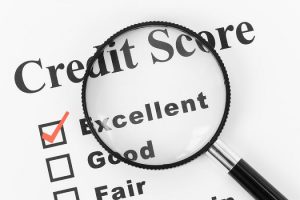When it comes to having good credit, you already know how important it is to pay your bills on time. But how you pay your bills — not just whether you pay them — is becoming increasingly important.
In the past two to three years, all three major credit bureaus have added a treasure-trove of new data to their credit reports. Analysts are slicing and dicing “trended data” in hundreds of ways, but probably the biggest change is that lenders now know exactly how you pay your bills: whether you’re a high-risk “revolver” who carries a balance, or a low-risk “transactor” who pays your credit cards in full every month.
Research shows that information is an important predictor of risk. Revolvers are three times more likely to default on new credit cards and auto loans and five times more likely to default on current credit cards than transactors, a TransUnion study found. Partial payers — those who actively pay down their balances — are a lower risk than those who just make the minimum payment.
But that’s not the only way the credit industry is using the new data. They also analyze:
-What kind of spender you are.
-How your credit behavior is changing over time (are you trending up or down?).
-How often you open and close accounts.
-What you spend every month — and more.
Then, they’re pairing that information with data from other sources, such as property and employment records, to create new models that can predict everything from your interest in a rewards card to your likelihood of default on different types of loans.
“In the credit industry, this new data is a game-changer,” says credit expert John Ulzheimer, who has worked for credit scorer FICO and credit bureau Equifax. “For lenders, it tells a much richer story about your relationship with your credit cards than what has traditionally been on your credit report. For consumers, it means how you manage your credit card accounts may determine whether you get a loan and what terms you’ll get.”
Until recently, your credit report displayed a snapshot of your accounts at a single point in time: your monthly balance, your credit limit and whether you failed to make at least the minimum payment.
Now, credit reports from all three bureaus show two years of payment history, so lenders can see exactly what you paid on each account each month and whether you tend to carry a balance, pay more than the minimum or pay off your card in full.
How trended data is used
Here are some ways financial institutions are analyzing and using the new data:
-Whether you are adding debt or paying it off. Take two consumers who both have $10,000 in debt. On the old report, they would look exactly the same, even if one had $20,000 in debt two years ago and the other had only $3,000. “So one person recently added $8,000 in debt and the other has recently paid off $20,000,” DeSaulniers says. “They are very different from a risk perspective.”
-How you handle a higher utilization rate. Under the traditional model, if your utilization rate (the sum of your balances divided by your credit limit) is high, you are considered higher risk. But if a lender looks at two years of data and sees that you’ve consistently had a 40 or 50 percent utilization rate with no ill effects, “That’s a consumer I want to do business with,” DeSaulniers says. “Even though they have a high utilization rate and their credit score may lower, I know they have been able to manage it over time.”
-Changes in your payment patterns. If you suddenly start paying just the minimum payment on one account you used to pay in full, that may be a sign that you’re about to default on other accounts. Even if you’re still making your normal payment, lenders looking at the data may reach out to you to make sure they remain a top priority.
-How much you spend each month. Having access to the raw dollar amounts you pay every month helps lenders identify the high-dollar transactors who are going to rack up swipe fees for credit card companies. It also gives lenders a better idea of your discretionary income, Mondelli says. “If someone can make a payment of a couple thousand dollars to their credit card on monthly basis and they do that consistently, that gives you some insight into what their income might be and their ability to pay for new credit products,” he says.
Michelle Crouch
CreditCards.com

